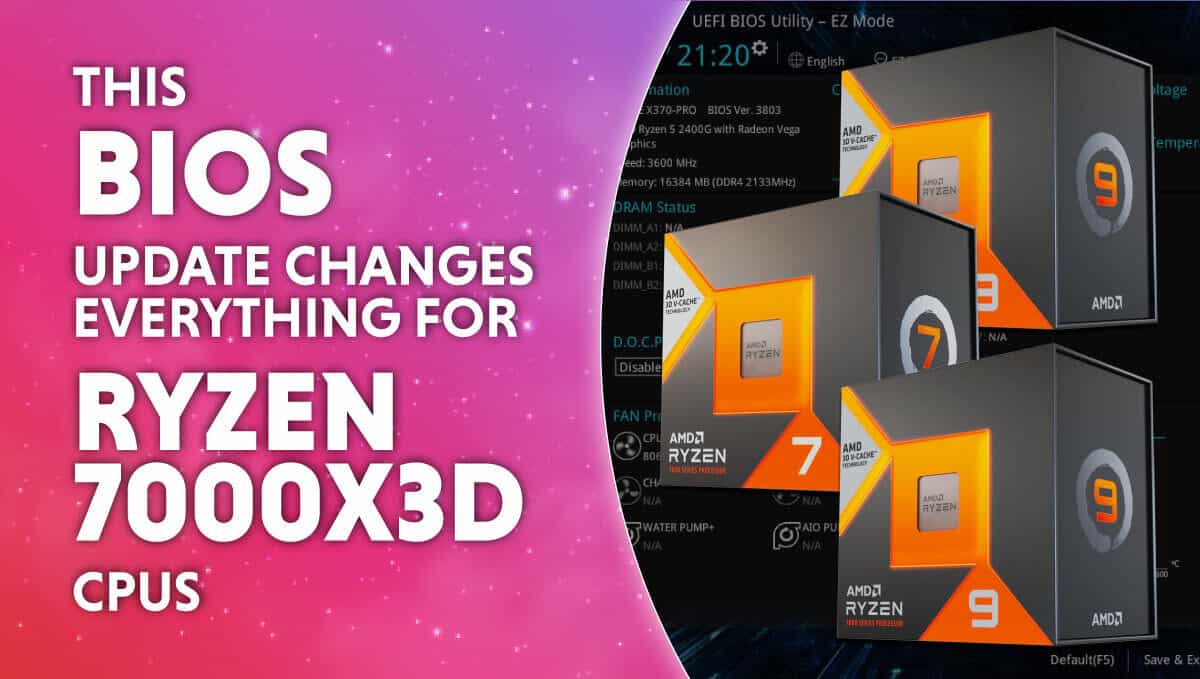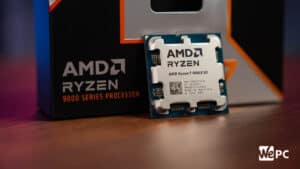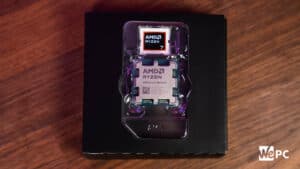This BIOS update changes everything for Ryzen 7000X3D CPUs
A new Beta BIOS has been sighted that lets you change which CCD triggers inside the 7000X3D CPUs

WePC is reader-supported. When you buy through links on our site, we may earn an affiliate commission. Prices subject to change. Learn more
AMD is about to release its flagship 7000X3D series processors, the 7950X3D and the 7900X3D. And with them comes the promise of better performance in most gaming workloads, even against the competition’s flagship CPUs. There have been some concerns that the 7000X3D series will suffer the same fate as the 5800X3D, but thanks to this new feature, it’s not looking like that’s going to happen. Thanks to the new Ryzen 7000X3D CCD BIOS update.
Now Read: Is Ryzen 7000X3D worth it?
There’s a new BIOS beta has been spotted that allows you to configure an algorithm on ASUS X670E motherboards, this algorithm controls what CCD is active at what time. There’s a reason this is useful, allow us to explain.
Ryzen 7000X3D CCD
In the new Ryzen 7000X3D processors, there are two CCDs (core complex die) that make up the architecture. This is different from the 5800X3D as it only had one.
The 5800X3D has a 3D V-cache, which is highly sensitive to heat and high voltages, so the CCD that the V-cache was attached to was limited to accommodate for the cache. This means that all of the CPU cores were heavily limited, as there was only one CCD. This dramatically affects the 5800X3D’s performance in multi-threaded workloads.
However, with Ryzen 7000X3D CPUs, there are two CCDs present. This means that only the CCD the 3D V-cache is attached to is limited in its performance, while the other CCD and its cores can operate normally. This allows one side of the CPU to boost to higher voltages than the other limited CCD cannot.
The Beta BIOS that allows you to select CCDs
Assigning tasks to cores (or CCDs) can be tricky, and both the operating system and firmware can make mistakes by sending high-priority workloads to slower threads. The good news is that you may soon have the option to adjust the CCD priority in your BIOS. This means you’ll have more control over which cores handle which tasks, independent of the operating system. By doing so, you’ll be able to fine-tune the performance of your system to better suit your needs.
A user on Twitter by the name of HXL (@9550pro) shared screenshots of the new Beta BIOS on the ASUS X670 platform. Specifically, version 0921, shows a number of advanced settings allowing you to control the X3D cores and CCDs.

These settings include many options to configure the algorithm conditions that activate specific CCDs. HXL also went on to say that since these options are present in BIOS, they are not driver-specific (driver agnostic).
These tweaks carry great importance, as we noted before Operating systems often make mistakes and trigger the wrong “limited” core. Resulting in worse performance. We saw similar issues with task schedulers within Windows when the 12th gen CPUs launched. We now have control over what CCD or core set is triggered and at what time.
CCD selection summary
If that’s all still too complicated, imagine this, we have half the CPUs’ cores with the new fancy 3D V-cache on one side, but they’re only good for one thing: Games. Then we have normal cores on the other side that can do everything well. This option will better let us utilize the CPU and CCD-specific workloads, allowing the performance hit of the inclusion of 3D V-cache to be minimal.
AMD has stated that the non-V-Cache CCDs in their processors can achieve higher clocks. According to a January interview with AMD’s Director of Product Management, Scott Stankard, “by not stacking one of the CCDs, it let us push the maximum T boost and 1T boost up to 5.7 GHz.” In other words, by not implementing the 3D V-cache in one of the CCDs, AMD was able to increase the clock speed for certain tasks, resulting in better performance.
Ryzen 7000X3D CCD update: Final word
This inclusion means that we’re expected to see more than we anticipated out of AMD’s new Ryzen 7000X3D CPUs. A lot of people were worried the new Ryzen 7000X3D CPUs would suffer the same fate as the 5800X3D. Although we still don’t have any manual overclocking. We can’t wait to see how the new X3D series performs. Especially with the addition of game changers like this Beta BIOS.










